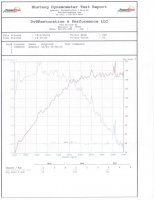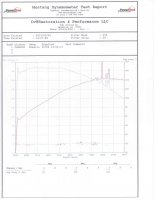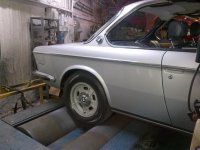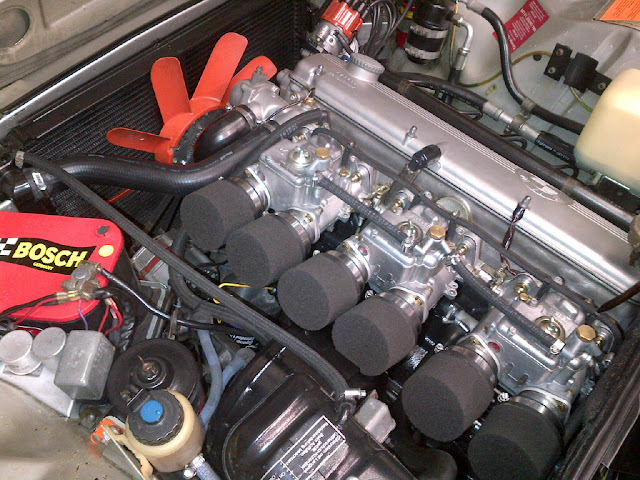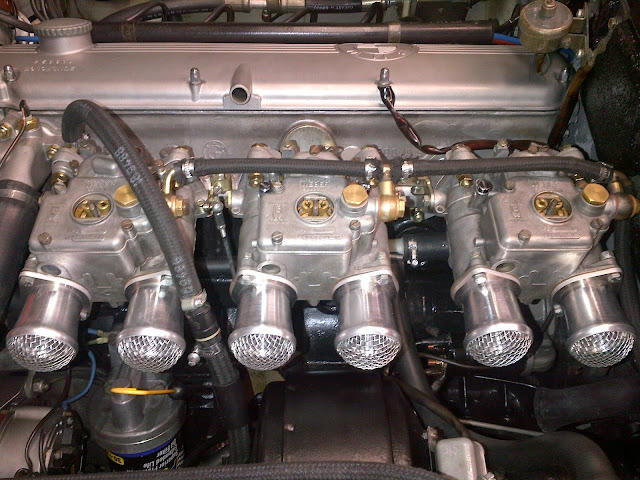Brought my car in to have dyno'd this weekend, the goal was to set the timing for max performance, and to fool with jetting if needed. The first pic is the baseline. Pulls were done in 4th gear so the horsepower may not be accurate because they wanted to use a 1:1 gear ratio in order to gauge rpm (is this correct?) but consistently showed the results of tweaking. The first thing we did was add bigger main jets because I was leaning out at higher rpm and bingo - 15 hp.
Next we fiddled with timing and settled on 30 degrees all in (I had it at 32), it flattened out the torque curve at the expense of some gained hp (second pic and 4th pull) but it drives much better now.
Are these results ok for a stock engine 40 years old (with triple Webers)?
I think the Webers help produce the nice torque curve. The mechanic seems to think my plug gap could be enlarged to correct the hiccups at high rpm so I opened them to .030 later. What else could cause the spikes?
Please chime in with comments/suggestions, I am a noob at this dyno stuff, but it was pretty cool to do.
Next we fiddled with timing and settled on 30 degrees all in (I had it at 32), it flattened out the torque curve at the expense of some gained hp (second pic and 4th pull) but it drives much better now.
Are these results ok for a stock engine 40 years old (with triple Webers)?
I think the Webers help produce the nice torque curve. The mechanic seems to think my plug gap could be enlarged to correct the hiccups at high rpm so I opened them to .030 later. What else could cause the spikes?
Please chime in with comments/suggestions, I am a noob at this dyno stuff, but it was pretty cool to do.
Attachments
Last edited:

